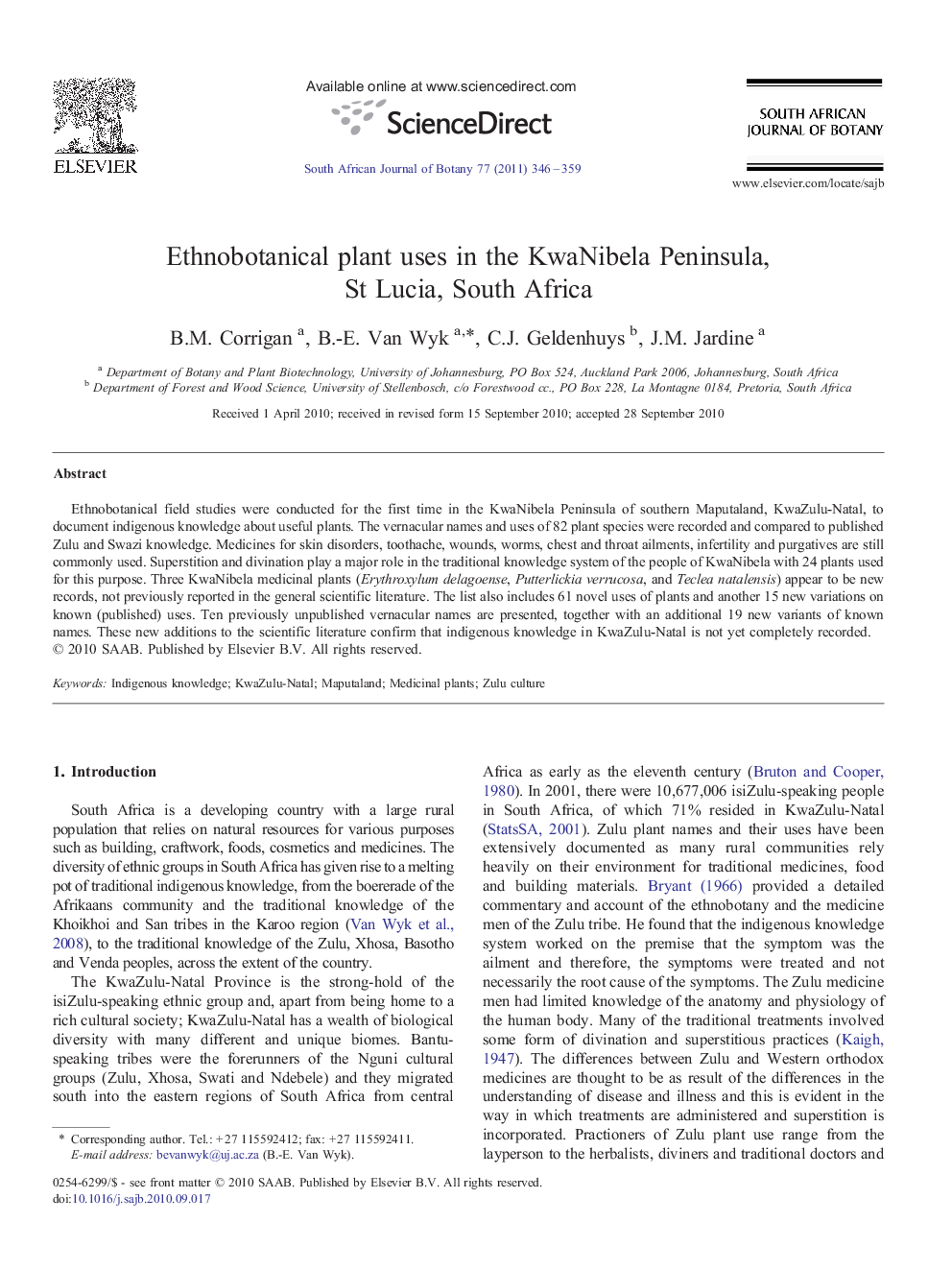| Article ID | Journal | Published Year | Pages | File Type |
|---|---|---|---|---|
| 4521430 | South African Journal of Botany | 2011 | 14 Pages |
Ethnobotanical field studies were conducted for the first time in the KwaNibela Peninsula of southern Maputaland, KwaZulu-Natal, to document indigenous knowledge about useful plants. The vernacular names and uses of 82 plant species were recorded and compared to published Zulu and Swazi knowledge. Medicines for skin disorders, toothache, wounds, worms, chest and throat ailments, infertility and purgatives are still commonly used. Superstition and divination play a major role in the traditional knowledge system of the people of KwaNibela with 24 plants used for this purpose. Three KwaNibela medicinal plants (Erythroxylum delagoense, Putterlickia verrucosa, and Teclea natalensis) appear to be new records, not previously reported in the general scientific literature. The list also includes 61 novel uses of plants and another 15 new variations on known (published) uses. Ten previously unpublished vernacular names are presented, together with an additional 19 new variants of known names. These new additions to the scientific literature confirm that indigenous knowledge in KwaZulu-Natal is not yet completely recorded.
Research Highlights►The ethnobotany of the KwaNibela Peninsula in KwaZulu-Natal was studied. ►Vernacular names and uses of 82 plant species were recorded. ►Three new species records and 61 new uses are documented. ►Ten new vernacular names and 19 new name variants are presented. ►Indigenous knowledge in KwaZulu-Natal is not yet completely recorded.
